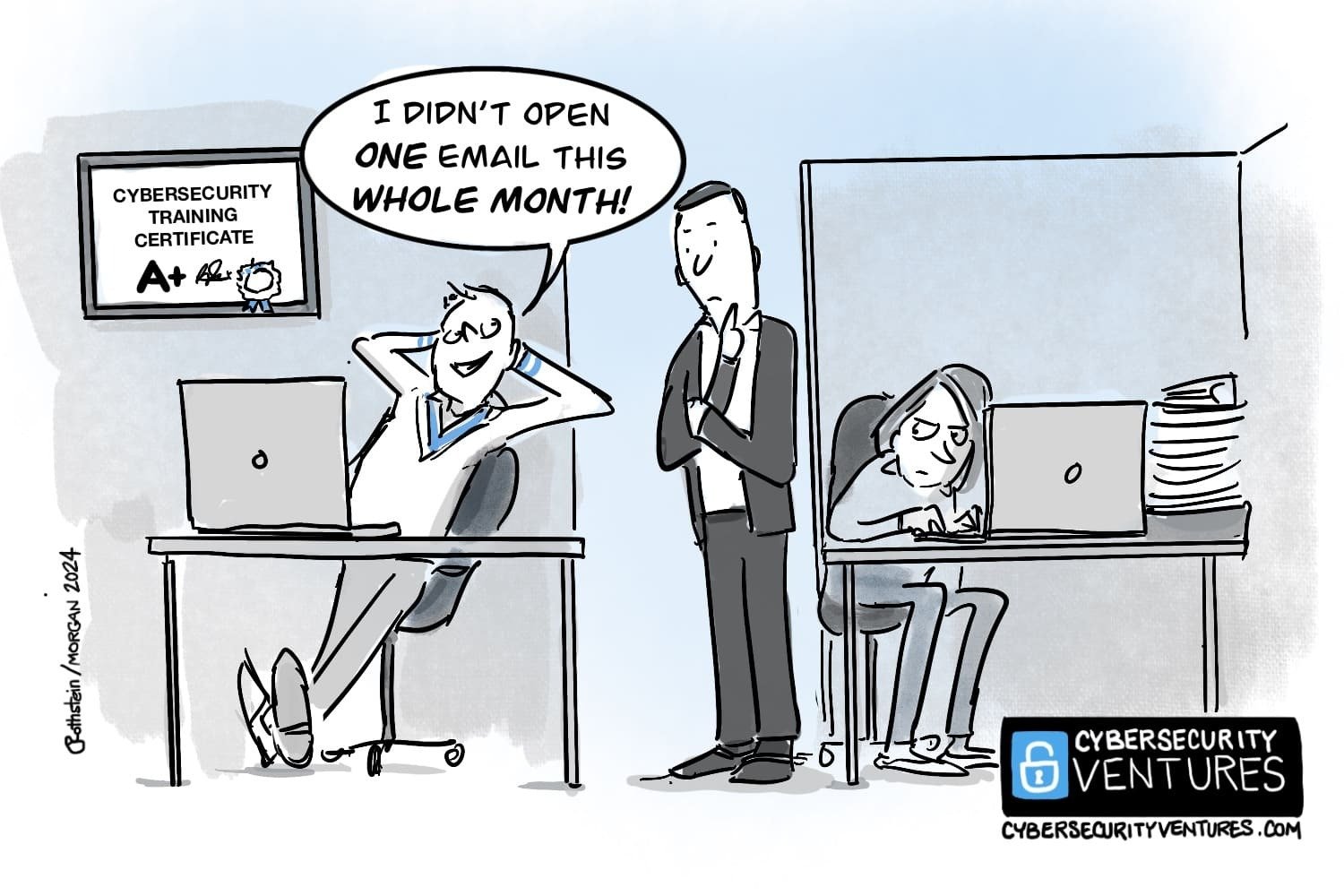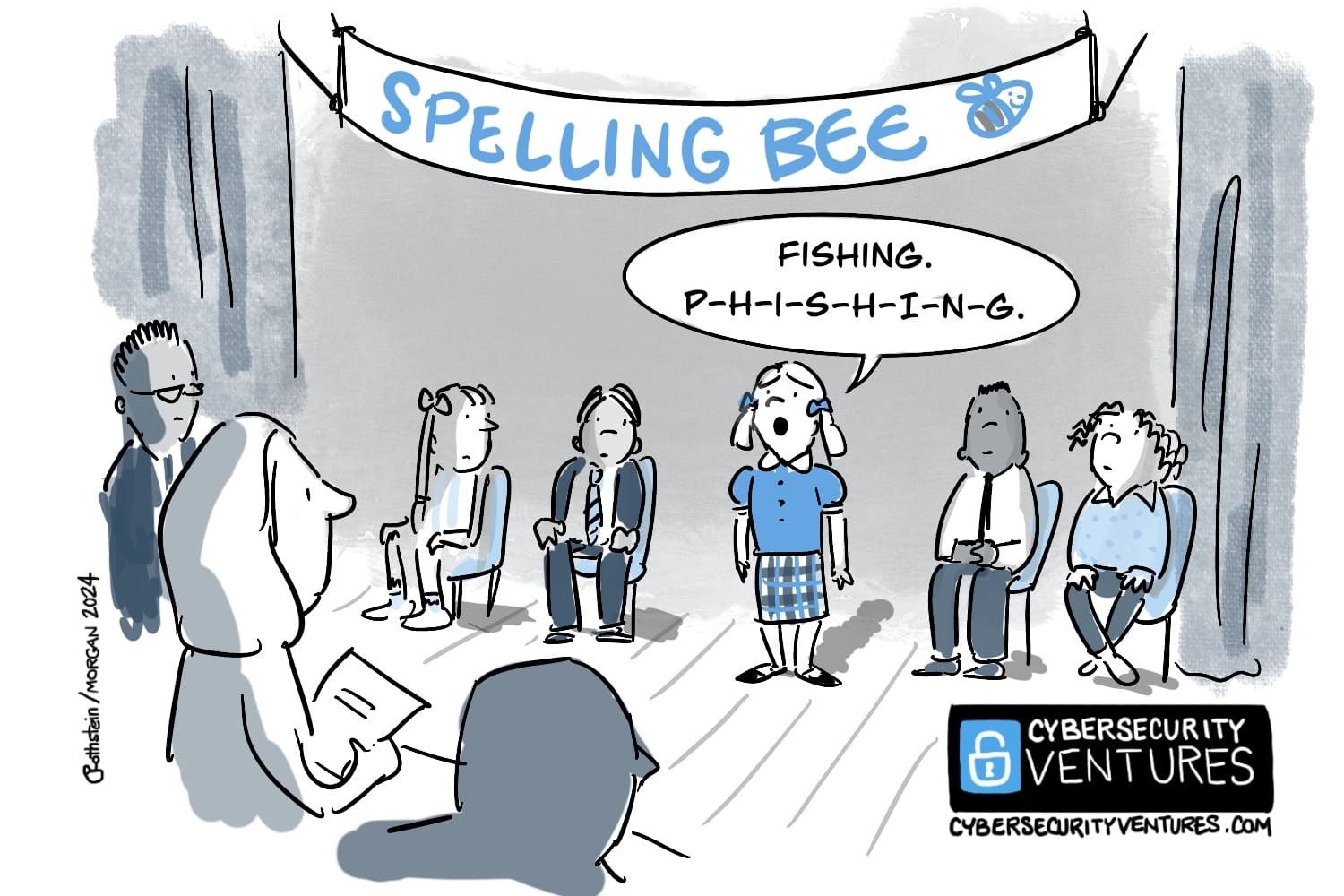For business owners, vigilance against cybersecurity threats is paramount. Your Managed Service Provider (MSP) should recognize the critical importance of keeping your Microsoft software current. Let's delve into the latest Microsoft security updates released on March 12, 2024, and why promptly applying these patches is vital for your business.
Hacking Dating.
Source: Cyber Crime Magazine
Striking the Right Balance: Managing Healthcare Cybersecurity and Compliance
Unveiling 3 Cybersecurity Myths That Pose Risks to Your Business in 2024
"Don't Click."
Source: Cyber Security Ventures
Fortify Your Business Network Security: 5 Powerful Strategies for Safeguarding Your Assets
Don't Fumble Your Security.
Source: Cyber Security Ventures
Elevating Regulatory Compliance: The Evolutionary Path of Zero Trust Access
In today's digital realm, regulatory compliance, underscored by mandates like GDPR, CCPA, and data residency, poses a formidable challenge for organizations. Meeting compliance standards not only demands substantial effort from compliance teams but also necessitates seamless integration of best practices and rigorous audit preparedness.
Navigating Ransomware 2.0: Safeguarding Your Business Amidst a Shifting Threat Environment
Ransomware has long been a significant threat to businesses, causing disruptions, financial losses, and reputational damage. However, cybercriminals are constantly evolving their tactics, and the recent emergence of Ransomware 2.0 presents businesses with new challenges and necessitates a reevaluation of their security posture.
Phishing
Source: Cyber Security Ventures
Can Zero Trust Enhance Productivity?
Zero Trust has emerged as a prominent strategy for safeguarding digital assets, drawing considerable attention for its efficacy in modern cybersecurity. This paradigm, which diverges from conventional security models reliant on perimeter defenses, is also recognized for its potential impact on workforce productivity. Delving into this methodology illuminates its principles and potential to fortify employee performance.
Deepfakes and the Rise of Social Engineering Scams: Protecting Your Business
The increasing sophistication of deepfakes, hyper-realistic AI-generated videos or audio recordings, poses a growing threat to businesses in today's cybersecurity landscape. These deepfakes are often used in social engineering scams, manipulating individuals into revealing sensitive information or taking detrimental actions for personal gain.
A Tale of Overcoming Cyber Threats with Auto Pentesting and CTEM
Chief Information Security Officer (CISO) Emily Reed is responsible for safeguarding the digital assets of a thriving healthcare organization renowned for its advanced digital technology solutions.
On a busy morning, Emily’s routine was disrupted by an urgent message from her security team. They were made aware of other healthcare organizations that had recently succumbed to a critical vulnerability that attacked their MOVEit Transfer systems. A remote command execution flaw, this vulnerability can allow escalated privileges and potential unauthorized access to MOVEit server environments. Emily quickly gathered her team to examine the evolving situation.
Fortunately, Emily was aware of this vulnerability. She had preemptively purchased Ridge Security’s RidgeBot automated penetration testing product, recently upgraded with new plugins that automatically detect and exploit the MOVEit vulnerability.
AI Is Smart Enough To Be Dumb
Source: Cybersecurity Ventures
PCI DSS 4.0: A Step-by-Step Guide for Businesses
The clock is ticking on PCI DSS v3.2.1, which will be retired on March 31, 2024. This means organizations accepting card payments must transition to the updated standard, PCI DSS 4.0, to remain compliant. While the core objectives remain the same, 4.0 introduces key changes with a more flexible and outcome-based approach.
How to Prepare Your Incident Response Plan
A cyber incident always creates a certain degree of chaos and confusion—that is, until the organization’s response team can snap into action.
An effective response requires the precise coordination of different departments and stakeholders from IT to executive management, all in the face of fast-evolving information.
Adversarial AI: A New Threat To Your Business
The rise of artificial intelligence (AI) has revolutionized various aspects of our lives, including cybersecurity. AI-powered solutions have become invaluable tools for threat detection, incident response, and proactive defense. However, as with any tool, AI itself introduces a new and concerning threat: adversarial AI.
3 CIS Resources to Help You Drive Your Cloud Cybersecurity
Source: Center for Internet Security
Author: Don Freeley, VP of It services, CIS
In the process of moving to the cloud, you need a security-first cloud migration strategy that considers both your security and compliance requirements upfront. In this blog post, we’ll discuss how you can use resources from the Center for Internet Security® (CIS®) to create such an approach.
Security Choices in the Cloud
To create a cloud security program, you have two main options to consider. As your first option, you can choose to manage the security of your workloads yourself. The advantage of choosing this route is that you will implement a custom fit to your organization and the needs of your business. However, you might not have knowledge of cloud security best practices, in-house expertise, or the desire to spend significant resources towards cloud security management. Cloud security is complex, requiring different technical skill sets and tooling than on-premises security programs.
Alternatively, you can buy pre-configured or managed services to create a comprehensive cloud security program. In doing so, you'll get to use a partner or product as a force multiplier that will enable you to safely operate in the cloud without incurring unnecessary technical debt and expense. This option can be especially helpful if you're in the beginning stages of wanting to keep your cloud secure.
Neither of the two options discussed above is better than the other. It's about identifying your organization's needs and selecting a method that works best for you to achieve them.
Getting Started with CIS Resources in the Cloud
At CIS, our mission is to make the connected world a safer place. We have numerous tools and resources that can help organizations of every size make their cloud migration journey simpler and more secure. Let's go over them below.
The CIS Critical Security Controls® (CIS Controls®)
The CIS Controls consist of prescriptive, prioritized, and simplified security best practices that you can use to strengthen your cybersecurity posture across your environments, including in the cloud. The CIS Controls v8 Cloud Companion Guide provides context around how each Control applies not only to the cloud but also to individual service models, what your responsibility looks like for a Control within applicable service models, and what products, tools, and threat information (if any) you need to consider. In that way, you can plan your implementation efforts to maximize your time, effort, and efficacy.
The CIS Benchmarks™
The CIS Benchmarks are secure configuration guidelines developed through consensus that you can use to harden your operating systems (OSes) across 25+ vendor product families. Their security recommendations don't just map back to the Controls; they are also referenced by several industry frameworks such as PCI DSS and HIPAA.
In the context of the cloud, the Benchmarks have several resources to help. These are the Foundations Benchmarks, the Compute Benchmarks, and the CIS Build Kits and CIS Configuration Assessment Tool (CIS-CAT)®.
The CIS Foundations Benchmarks
The CIS Foundations Benchmarks are designed to help you create foundational security in the cloud by focusing on three essential areas: identity and access management (IAM), logging and monitoring, and networking. They consist of 50-60 security recommendations so that you can get started in the cloud and quickly set up essential security policies on a specific cloud service provider (CSP) platform.
Each CIS Foundations Benchmark includes sections that tell you exactly which CSP services we cover. Some are essential to your security. As an example, our CIS AWS Foundations Benchmark includes a section that says, "Ensure MFA is enabled on the root account." You need to use Amazon IAM to configure that recommendation. By contrast, other sections depend on the consumption of your service. If you don't use Amazon EC2, for instance, you can disregard those recommendations.
The CIS Cloud Service Category Benchmarks
The Foundations Benchmarks' 50-60 recommendations intentionally make it easy for you to create foundational security on a CSP platform. From there, you can take additional efforts to holistically secure your could environment using the CIS Cloud Service Category Benchmarks, like the CIS AWS Compute Services Benchmark. These resources tell you which security recommendations to implement if you're using specific services that are beyond the scope of the Foundations Benchmarks. In that way, you can securely configure your use of cloud services for compute, databases, storage, and other services in a CSP.
CIS Build Kits and CIS-CAT
The Benchmarks, including the Foundations Benchmarks and Cloud Service Category Benchmarks, are available in Word, Excel, and PDF formats. However with CIS-CAT, you can speed policy to implementation and automate your evaluation of your systems' configurations against other Benchmarks. You can also easily customize and rapidly apply the Benchmarks recommendations using the CIS Build Kits to remediate your system, which are available as Group Policy Objects and Bash shell scripts.
CIS Hardened Images®
You're ultimately responsible for the security of a guest operating system (OS) on virtual machine images in the cloud. This can be difficult to do. As mentioned previously, the CIS Benchmarks are documents that point the way to system hardening, but without additional resources, you'll need to manually implement the 200-300 security recommendations in the cloud one by one.
Fortunately, CIS Hardened Images can help! These virtual machine images are pre-configured to the security recommendations of the CIS Benchmarks. In that sense, you can spin up a pre-hardened OS without having to spend time and money on manual hardening.
To learn more Contact us
Building Trust: Ensuring Ethical AI Development for Robust Security Solutions
n today's digital landscape, cybersecurity threats lurk around every corner. From phishing scams and malware attacks to data breaches and ransomware, businesses of all sizes are vulnerable. But amidst this rising tide of cybercrime, a powerful ally emerges: Artificial Intelligence.
AI-powered security solutions hold immense potential to revolutionize threat detection and prevention. From analyzing vast amounts of data to identifying intricate attack patterns, AI can bring unparalleled speed and accuracy to your cybersecurity defenses. However, as with any powerful tool, trust in AI is paramount for its successful implementation.
Practical Strategies to Safeguard Your Online Presence
Source: NetDiligence
In today’s digital landscape, safeguarding your online presence is paramount. Cyber threats are on the rise, and protecting your personal information is crucial.
This blog post offers 13 essential tips to strengthen your personal cybersecurity.
1. Strong Passwords and Passphrases
Create unique, complex passwords.
Consider using a reliable password manager.
2. Implement Two-Factor Authentication (2FA)
Enable 2FA wherever possible for added security.
3. Keep Software and Devices Updated
Regularly update your operating system and software.
Stay protected from potential vulnerabilities.
4. Secure Your Wi-Fi Network
Use strong passwords and encryption for your Wi-Fi.
Avoid default settings.
5. Be Wary of Phishing Emails
Recognize phishing attempts.
Verify email sources and links.
6. Safe Browsing Habits
Use secure browsers and extensions.
Avoid risky websites.
7. Review Social Media Privacy Settings
Adjust privacy settings to limit public access to your information.
8. Regular Data Backups
Backup data both online and offline.
Guard against data loss.
9. Stay Informed
Stay updated with cybersecurity news.
Educate yourself on common cyber risks.
10. Public Wi-Fi Safety
Avoid public Wi-Fi for sensitive tasks.
Consider using a VPN for added security.
11. Use Encrypted Messaging Apps
Opt for messaging apps with end-to-end encryption.
Protect your private conversations.
12. Employ Antivirus and Anti-Malware Software
Install reputable antivirus and anti-malware programs.
Regularly scan your devices for potential threats.
13. Secure Your Mobile Devices
Lock your smartphones and tablets.
Manage app permissions.
Remember that cybersecurity is an ongoing process. By following these 13 tips, you can significantly enhance your personal cybersecurity and protect your digital life from potential threats.
For more in-depth information and cybersecurity insights, keep following our blog. Stay safe online!
To learn more Contact us



















